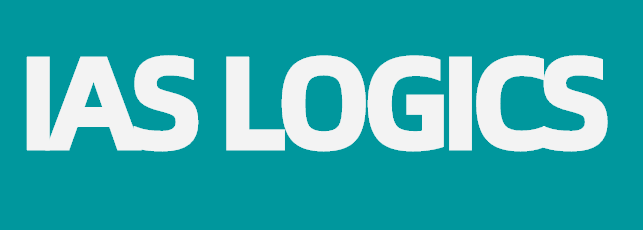The endocrine system is a collection of glands that secrete chemical messages known as hormones. A hormone is a specific messenger molecule synthesized and secreted by a group of specialized cells called an endocrine gland. These glands are ductless, which means that their secretions (hormones) are released directly into the bloodstream and travel to elsewhere in the body to target organs, upon which they act. Note that this is in contrast to our digestive glands, which have ducts for releasing the digestive enzymes.
Hormones are grouped into three classes based on their structure:
- Steroids: Steroids are lipids derived from cholesterol. e.g. Testosterone is the male sex hormone. Steroid hormones are secreted by the gonads, adrenal cortex, and placenta.
- Peptides: Peptides are short chains of amino acids; most hormones are peptides. They are secreted by the pituitary, parathyroid, heart, stomach, liver, and kidneys.
- Amines: Amines are derived from the amino acid tyrosine and are secreted from the thyroid and the adrenal medulla.
Pheromones are also communication chemicals, but are used to send signals to other members of the same species. Pheromones are used to mark territory, signal prospective mates, and communicate. Queen bees, ants, and naked mole rats exert control of their respective colonies via pheromones
Interferons are proteins released when a cell has been attacked by a virus. They cause neighboring cells to produce antiviral proteins. Once activated, these proteins destroy the virus.
Prostaglandins are fatty acids that behave in many ways like hormones. They are produced by most cells in the body and act on neighbouring cells.
Hormones
| Source | Hormone | Target | Physiologic effect |
| Anterior pituitary | Follicle-stimulating hormone (FSH) | Ovary and Testes | Growth of ovarian follicles or seminiferous tubules |
| Anterior pituitary | Luteinizing hormone (LH) | Ovary and Testes | Production of estrogen and progesterone or testosterone |
| Anterior pituitary | Prolactin (LTH) | Ovary and Mammary | Stimulate milk production in breast maintain secretion of estrogen and progesterone by ovary |
| Anterior pituitary | Thyroid stimulating hormone (TSH) | Thyroid | Stimulates secretion of thyroid hormones |
| Anterior pituitary | Adrenocorticotropic hormone (ACTH) | Adrenal cortex | Stimulates secretion of adrenal cortex hormones |
| Anterior pituitary | Growth hormone (GH) | General | Stimulates growth |
| Anterior pituitary | Melanocyte-stimulating hormone (MSH) | Melanocytes | Stimulates dispersal of pigment in chromatophores |
| Hypothalamus via posterior pituitary | Oxytocin | Uterus and Mammary | Stimulates contraction and secretion of milk |
| Hypothalamus via posterior pituitary | Antidiuretic hormone (ADH) | Kidney | Stimulates reabsorption of water |
| Thyroid gland | Thyroxin and triodothyroxin | General | Stimulates metabolism, growth and development |
| Thyroid gland | Calcitonin | Bone | Lowers blood calcium level by inhibiting bone breakdown |
| Parathyroid gland | Parathyroid hormone | Bone, kidney digestive tract | Increases blood calcium by stimulating bone breakdown |
| Adrenal cortex | Mineralocorticoids (aldosterone) | Kidney | Maintain sodium and phosphate balance |
| Adrenal cortex | Glucoocorticoids (cortisol) | General | |
| Adrenal cortex | Dehydroepiandrosterone (DHEA) | Stimulate sex drive induce labor | |
| Adrenal medulla | Epinephrine (adrenalin) | Muscle, liver | Stimulates glucose release short term cope with stress |
| Adrenal medulla | Norepinephrine | Blood vessels | Constricts blood vessels increase heart rate |
| Pineal gland | Melatonin | Gonads, pigment cells other cells | Control biorhythms influence reproduction |
| Pancreas alpha cells | Glucagon | Liver fatty tissue | Raise blood glucose concentration stimulate gluconeogenesis |
| Pancreas beta cells | Insulin | General | Lower blood glucose concentration stimulate glycogen synthesis. |
| Ovary | Estrogen estradiol | General uterus | Develop/maintain female characteristics stimulate growth of uterine lining |
| Ovary | Progestrogen | Uterus breast | Stimulate development of uterine lining |
| Ovary and placenta | Relaxin | Pelvic ligaments | Relaxes pelvic ligaments |
| Placenta | Chorionic gonadotropin | Anterior pituitary | Stimulates release of FSH and LH |
| Testes | Testosterone | General and reproductive structures | Develops and maintains male sex characteristics promotes spermatogenesis |
| Testes | Inhibin | Anterior lobe of pituitary | Inhibits FSH release |
| Testes | Testosterone | General and reproductive structures | Develops and maintains male sex characteristics promotes spermatogenesis |
| Testes | Testosterone | General and reproductive structures | Develops and maintains male sex characteristics promotes spermatogenesis |
| Duodenal mucosa | Secretin | Pancreas | Stimulates secretion of pancreatic juice |
| Duodenal mucosa | Cholecystokinin | Gallbladder | Stimulates release of bile by gallbladder |
Diseases of Kidney
Acute Renal Failure: No urine is formed by kidney and the wastes and water accumulates in the body. It can be treated by dialysis, by an artificial filtration of blood through semi permeable membaranes.
Kidney stone: It is also known as renal calculi, kidney stones are the result of crystallization of certain substances found in urine, including calcium, phosphate, oxalic acid, and uric acid. Stones may form in the urine collecting area (pelvis) of the kidney, as well as the ureters (narrow tubes connecting the kidney to the urinary bladder).





